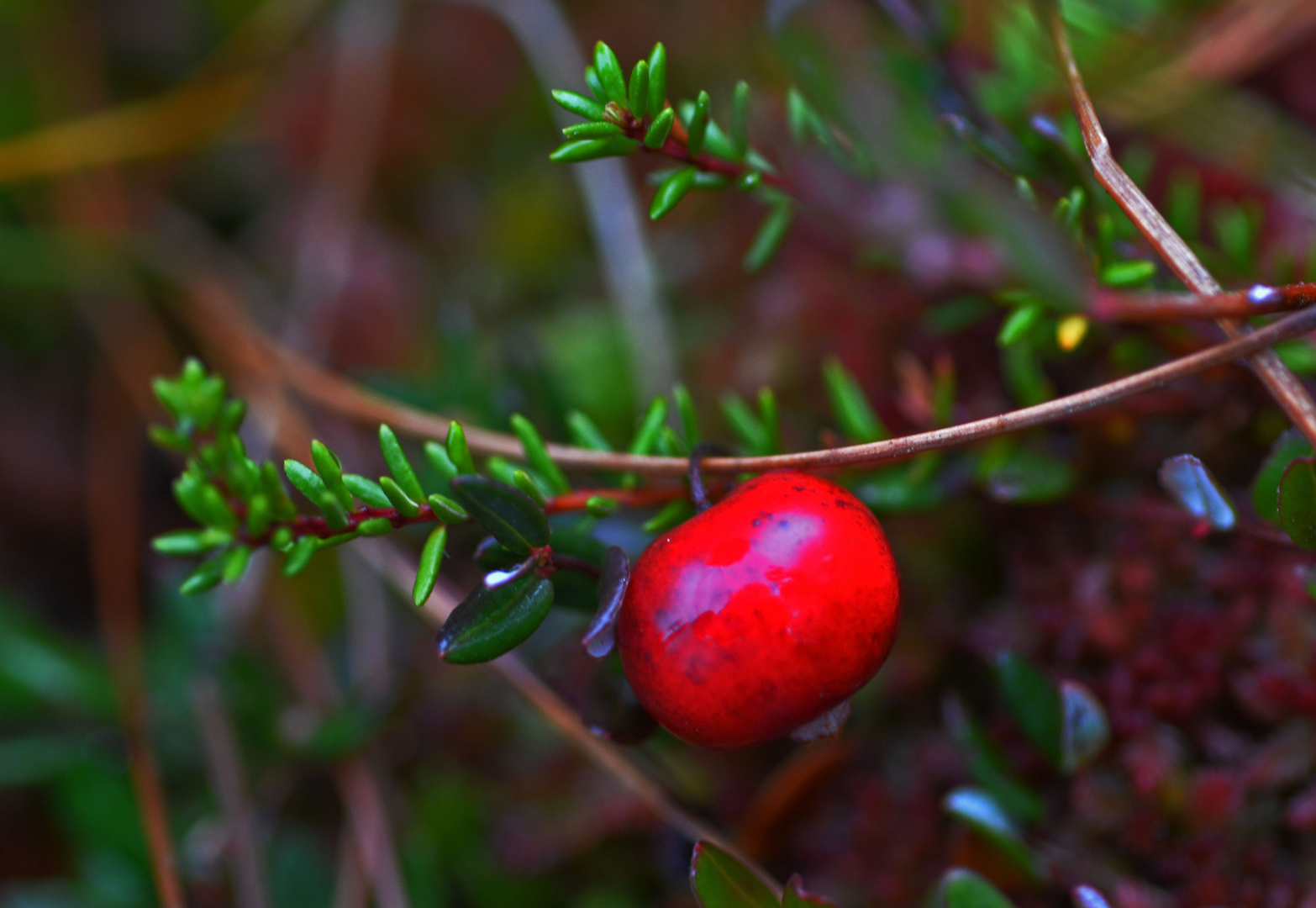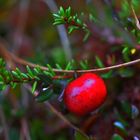Cranberry
Cranberries are a group of evergreen dwarf shrubs or trailing vines in the subgenus Oxycoccus of the genus Vaccinium. In Britain, cranberry may refer to the native species Vaccinium oxycoccos,[1] while in North America, cranberry may refer to Vaccinium macrocarpon.[2] Vaccinium oxycoccos is cultivated in central and northern Europe, while Vaccinium macrocarpon is cultivated throughout the northern United States, Canada and Chile.[3] In some methods of classification, Oxycoccus is regarded as a genus in its own right.[4] They can be found in acidic bogs throughout the cooler regions of the Northern Hemisphere.
Cranberries are low, creeping shrubs or vines up to 2 meters (7 ft) long and 5 to 20 centimeters (2 to 8 in) in height;[5] they have slender, wiry stems that are not thickly woody and have small evergreen leaves. The flowers are dark pink, with very distinct reflexed petals, leaving the style and stamens fully exposed and pointing forward. They are pollinated by bees. The fruit is a berry that is larger than the leaves of the plant; it is initially light green, turning red when ripe. It is edible, but with an acidic taste that usually overwhelms its sweetness.
Cranberries are a major commercial crop in certain American states and Canadian provinces (see cultivation and uses below). Most cranberries are processed into products such as juice, sauce, jam, and sweetened dried cranberries, with the remainder sold fresh to consumers. Cranberry sauce is a traditional accompaniment to turkey at Christmas dinner in the United Kingdom, and at Christmas and Thanksgiving dinners in the United States and Canada.





















Sigrun Häuser 11/10/2018 6:02
Well documented, and your foto is great! Saluti, Siggi